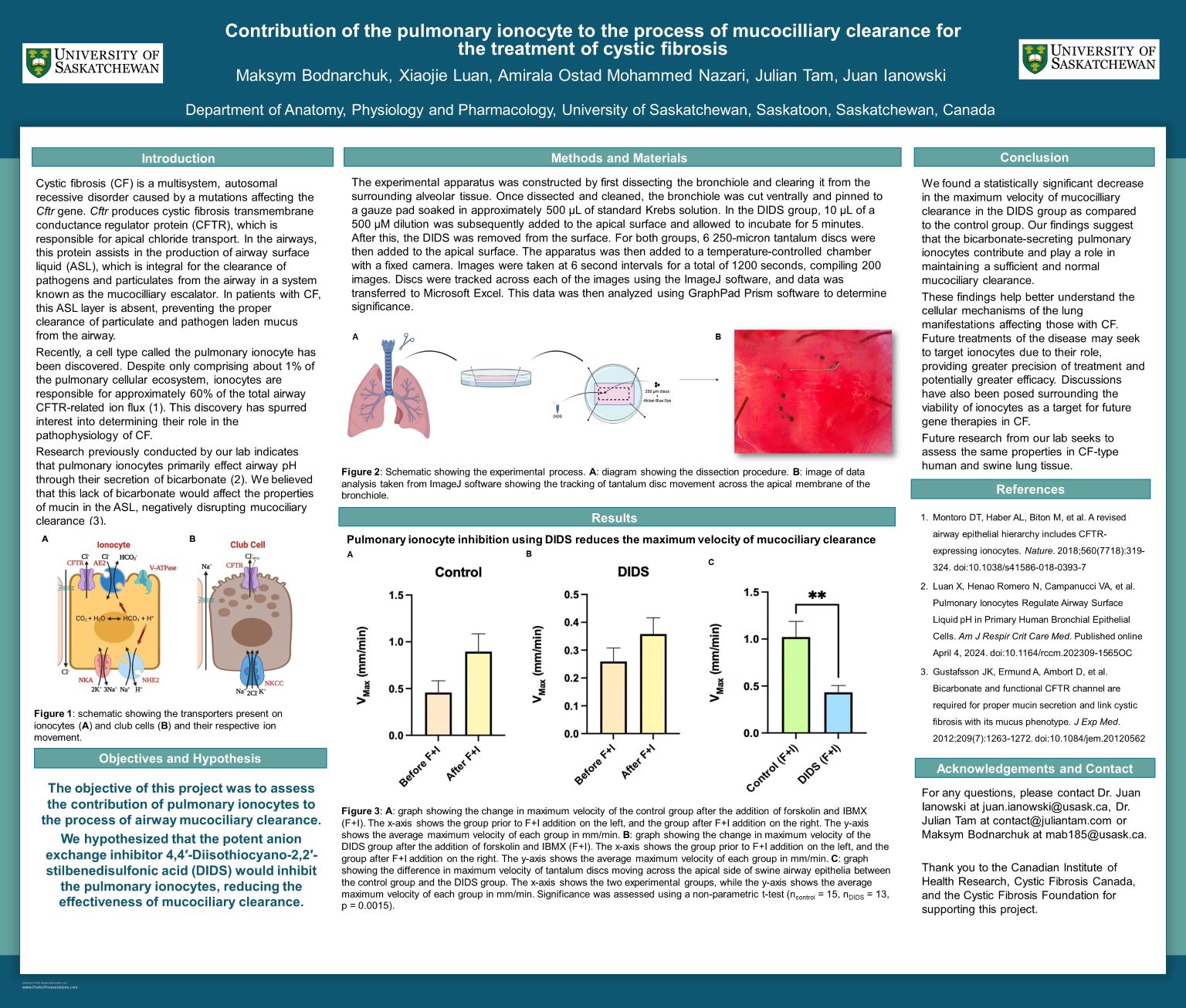
Contribution of the pulmonary ionocyte to the process of mucocilliary clearance for the treatment of cystic fibrosis
Max Bodnarchuk
Pulmonary ionocytes are a recently discovered cell type believed to play a role in the pathogenesis of cystic fibrosis (CF). It has been shown in animal models that while ionocytes comprise less than 1% of the total airway, they are responsible for approximately 60% of the total CFTR dependent ion flux [1]. Our lab has previously discovered that pulmonary ionocytes are responsible for the regulation of airway surface liquid (ASL) pH, and abnormalities in this mechanism result in acidic and dehydrated ASL [2]. Based on this observation, we believed that this would negatively impact the antimicrobial properties of the ASL and the ability to clear the airways. This project sought to quantify the effect of inhibiting ionocytes on the efficacy of mucocilliary clearance. We measured mucociliary clearance using dissected wild-type (Cftr +/+) swine bronchioles, and ionocyte inhibition was accomplished using the potent anion exchange inhibitor 4,4′-diisothiocyano-2,2′-stilbenedisulfonic acid (DIDS). Our results showed that DIDS had a significant inhibitory effect on mucociliary clearance rates (p = 0.0015) as compared to the control group. Based on this finding, we conclude that the pulmonary ionocyte plays a role in maintaining the normal functioning of mucociliary clearance.
